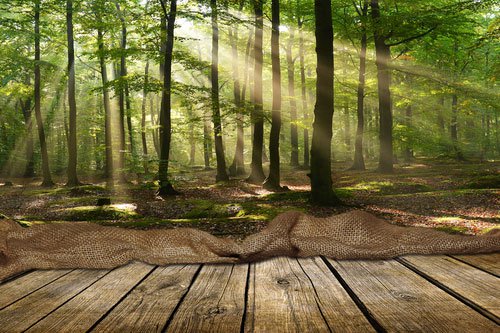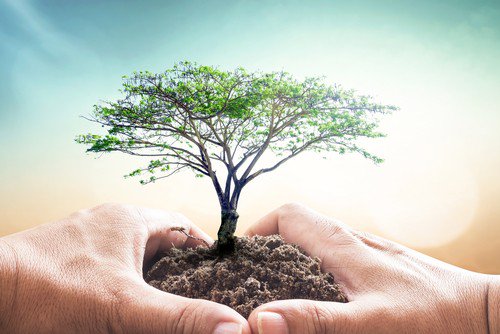With the “eco” label, almost anything can be sold nowadays in the context of ecological and sustainable house construction, often at a significantly higher price than comparable “non-eco” products. But are supposedly ecological products actually always more environmentally friendly and how can environmental compatibility and a smaller budget be reconciled?
Higher investments in sustainability must be calculated in terms of energy savings
Ecological and sustainable house construction is often designed according to individual ideas and builders decide for themselves which ecological standards they want to set above and beyond those required by law. When building a house, investments in sustainability often lead to higher costs. Whether and when these will be amortized by lower energy costs cannot always be said in general terms and must be calculated precisely.
When it comes to ecology and sustainability, many aspects of building a house are important
Many providers who advertise eco-products in ecological and sustainable house construction only focus on one building material and the sub-processes associated with it. But individual materials do not yet constitute an ecological construction method, because when building a truly sustainable house, it is more a question of the entire construction process.
When providers advertise ecological and sustainable house construction, builders should take a close look at the ecological standard behind it and how it is achieved. Especially when it comes to ecology and sustainability when building a house, it is important for the construction company to have as much experience as possible. Because it is particularly about the interaction of different components that make up the ecological standard from the construction phase to the later energy efficiency of the house.
There are many things that can be adjusted in ecological and sustainable house construction: power supply, hot water treatment, building materials, heating, insulation, windows and doors. You don’t always have to get the best out of every area if there is ultimately no willingness to do so. Builders can e.g. B. achieve some sustainability with very good insulation technology and thus e.g. B. cut back in other areas. In any case, good insulation is the most cost-effective method of realizing an ecological claim. investments e.g. B. in solar thermal or solar power supply , however, are more expensive.
Ecological sustainability using the example of wood preservatives in a wooden house
The example of wood preservatives illustrates the discrepancy that often occurs in ecological and sustainable house construction between the desire for environmental friendliness and the construction reality. On the one hand, wooden houses are considered ecologically valuable, on the other hand, the use of wood preservatives is less so. Because the natural raw material wood is no longer recyclable after treatment and can therefore not be returned to the natural cycle. On the other hand, an ecologically sustainable building should be stable in the long term – and without wood preservatives, a wooden house is not habitable for the usual 80-100 years.
Environmentally conscious consumers can opt for biological wood preservatives by insisting on them from suppliers. Biological wood preservatives can also do without biocides, as they treat the wood in such a way that wood-damaging insects can no longer recognize it as wood (because it has such a low odor, for example).
Here you can learn more about the advantages and disadvantages of wooden houses . Here you will find a range of articles on specific topics related to green building and sustainability .
Biomass and wind farms are often controversial
Even outside the construction industry, everything is not always clear, which again emphasizes that it is best to get as comprehensive a picture as possible before jumping on a trend. For example, the extraction processes of some renewable energies are controversial. The biomass process is repeatedly criticized. Because the plants and soils that are now used to generate energy are often missing in the production of food or feed. In addition, biomass consumes a relatively large amount of energy in the processing process itself, which further calls into question its actual environmental benefits.
Wind energy is also criticized. There are always groups that speak out against the construction of further wind farms, as this would mean a massive intervention in nature. Wind turbines and wind farms do not necessarily change landscapes for the better and often cause noise pollution. On the other hand, wind energy makes a major contribution to the energy revolution and sustainable energy supply.
Save costs through your own initiative, e.g. B. in clay construction
Some builders lend a hand with ecological and sustainable house construction. This is one way to absorb the higher investments. Some work, especially in earth building, can be easily implemented by laypersons. Below is an example calculation:
If you want to build a house on 140m² with three floors and a basement and assume that the construction costs will be around €275,000, you could save up to €25,000 by doing your own work.
For less experienced do-it-yourselfers, painting and wallpapering, laying tiles and laminate flooring and working on the outdoor facilities and the garden are all suitable.
Experienced craftsmen can also plaster walls independently or carry out work on windows, doors and stairs. However, only professionals should dare to do the electrical or sanitary installation. However, these can then be given a helping hand if necessary. You can find out more about earth building here.
Here’s a rundown of things you can do yourself and how much you can save:
For beginners
| work | savings potential |
| Painting and wallpapering work | 60-80% |
| Lay laminate flooring | €10-25 per m² |
| Lay tiles | approx. 30 € per m² |
| drywall | 60-70% |
| outdoor facilities | can vary greatly |
For advanced
| work | savings potential |
| plaster | 70-80% |
| windows, doors and stairs | 10-30% |
| structural work | very time-consuming, so a lot can be saved here with help |
Conclusion
Providers often advertise with ecological and sustainable house construction, as there is a trend in this regard that promises high sales figures. The use of certain individual building materials is often hyped up as an eco-house. Building owners who really want to achieve a high ecological standard should therefore check exactly what is behind the offers. Because meaningful sustainability always comes about through the interaction of different components (e.g. building materials, building services, insulation, etc.). In addition, builders with ecological standards can ensure that the construction company is already aware of issues such as B. paying attention to saving CO2 emissions. The best way to build ecological and sustainable houses is to work with construction companies that have a lot of experience in this field and are passionate about ecology and sustainability themselves. However, sustainable measures often result in higher investment costs. One can consider mitigating this by doing some work yourself. In addition, it should be calculated exactly whether and when z. B. Investments in energy efficiency can actually pay off by saving energy costs.




